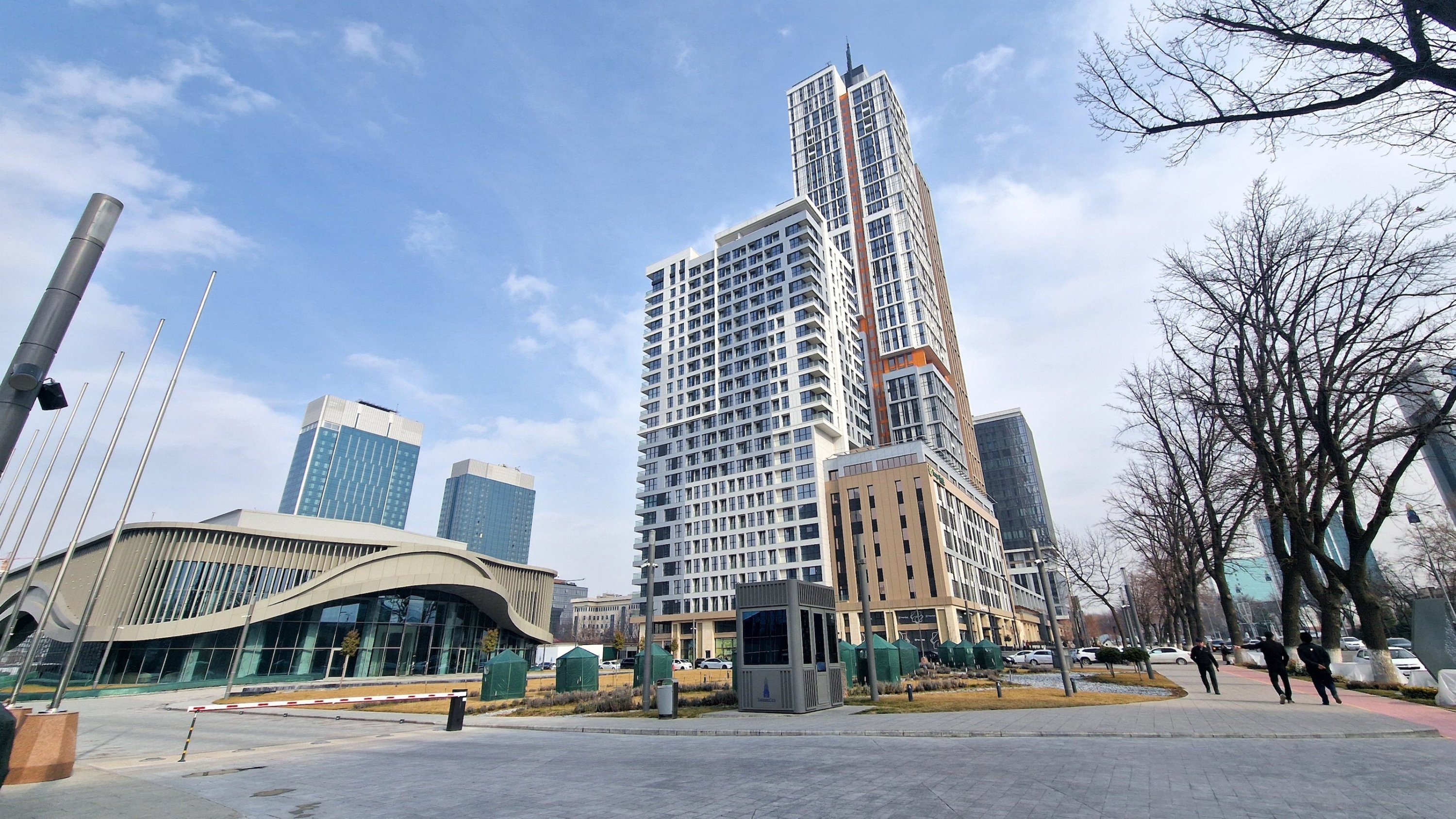© Turkuvaz Haberleşme ve Yayıncılık 2025
Tashkent, one of Central Asia's oldest and most magnificent cities, has undergone dramatic changes in recent years. Modern buildings and structures, built by Turkish companies, now dominate the skyline, making the city more vibrant and dynamic.
Founded over 2,200 years ago, Tashkent celebrated this anniversary in 2009, with UNESCO acknowledging the milestone. The city is known for its historical mosques and madrassas. In contrast, it also boasts newly constructed high-rise buildings, parks and entertainment centers.
After the devastating earthquake of 1966, Tashkent was largely rebuilt and earned the title "Gateway to the East." The city's modern image took shape during the Soviet era with landmark projects like the first metro system in Central Asia and the 375-meter tall Tashkent TV tower.
The expansive streets and boulevards, remnants of the Soviet period, have begun to change significantly in recent years. The space once occupied by Soviet-era buildings has made way for new high-rise structures and skyscrapers with contemporary designs, marking a shift in Tashkent's urban landscape.

A notable development in Tashkent is the construction of a district called "Tashkent City" in the city center. Here, Turkish, Chinese and Korean companies have built a number of high-rise residential, business and commercial buildings. Among these, one skyscraper stands out as the tallest in Central Asia. Built by a Turkish company, this impressive 266.5-meter-tall (874.34-foot-tall) building is visible even from the furthest corners of the city.
With its modern design, the skyscraper has become a new symbol of Tashkent, especially during holidays when it is illuminated with the colors of the flags of "and Türkiye, offering a striking visual appeal.
Both of the tallest skyscrapers in Tashkent were constructed by Turkish companies. Additionally, Turkish firms have built entertainment centers, shopping malls and office buildings, each notable for its unique design and contributing to the city's modern look.
In 2021, Turkish designer Sinan Turaman completed a monumental project – the 60-meter-high Independence Monument, the tallest monument in Uzbekistan. Built by Turkish companies, the monument reflects the rich 3,000-year history of the Uzbek people and serves as a key attraction for foreign delegations, who often visit to lay wreaths.
The monument incorporates significant historical elements, representing the civilizations and influential figures that shaped the region from antiquity to modern times. It draws architectural influences from the Guri Amir, a mausoleum of the Turkic conqueror Timur and the Registan Complex in Samarkand, as well as other famous sites such as the Ulugh Beg Observatory and the Samanid Mausoleum in Bukhara.
The monument’s front showcases a blue dome inspired by the tomb of Timur, founder of the Timurid Empire. Below the dome is a relief wall that chronicles Uzbekistan’s 3,000-year history, featuring depictions of great figures like Ibn Sina (Avicenna), Al-Khwarizmi, Al-Biruni and Amir Timur.
Uzbek architect Husan Sadıkov spoke to Anadolu Agency (AA) about the recent surge in high-rise buildings in Tashkent. According to Sadıkov, these new constructions are quite different from the Soviet-era architecture that once dominated the city. The modern buildings stand out for their grandeur and impressive designs, with Turkish-built structures particularly noticeable due to their spectacular appearance.
Sadıkov emphasized that Turkish companies, with their vast experience and expertise, have played a key role in transforming Tashkent's cityscape.
Ömer Sarıkoç, founding member and vice president of MÜSIAD Uzbekistan, highlighted the significant role of Turkish companies in Tashkent's construction boom. He noted that these companies have become key players in the Uzbek construction sector, contributing greatly to its growth under President Shavkat Mirziyoyev’s leadership.
Sarıkoç explained that Turkish companies have completed many major projects in Tashkent, including the two tallest buildings in the city. He also mentioned that approximately 100 ongoing projects in Tashkent are being carried out by Turkish firms.
The close relationship between the two countries has positively impacted Turkish contractors in Uzbekistan. "The trust placed in Turkish companies by the Uzbek government is a significant advantage for us," Sarıkoç stated. He added that Turkish firms are excited to be part of President Mirziyoyev's vision for the country’s development.
Sarıkoç emphasized that President Mirziyoyev’s trust in Turkish companies – more so than with firms from many European countries – has been a tremendous boost for the construction sector. "This trust has energized us and provided Turkish companies with an invaluable opportunity in Uzbekistan," he concluded.
